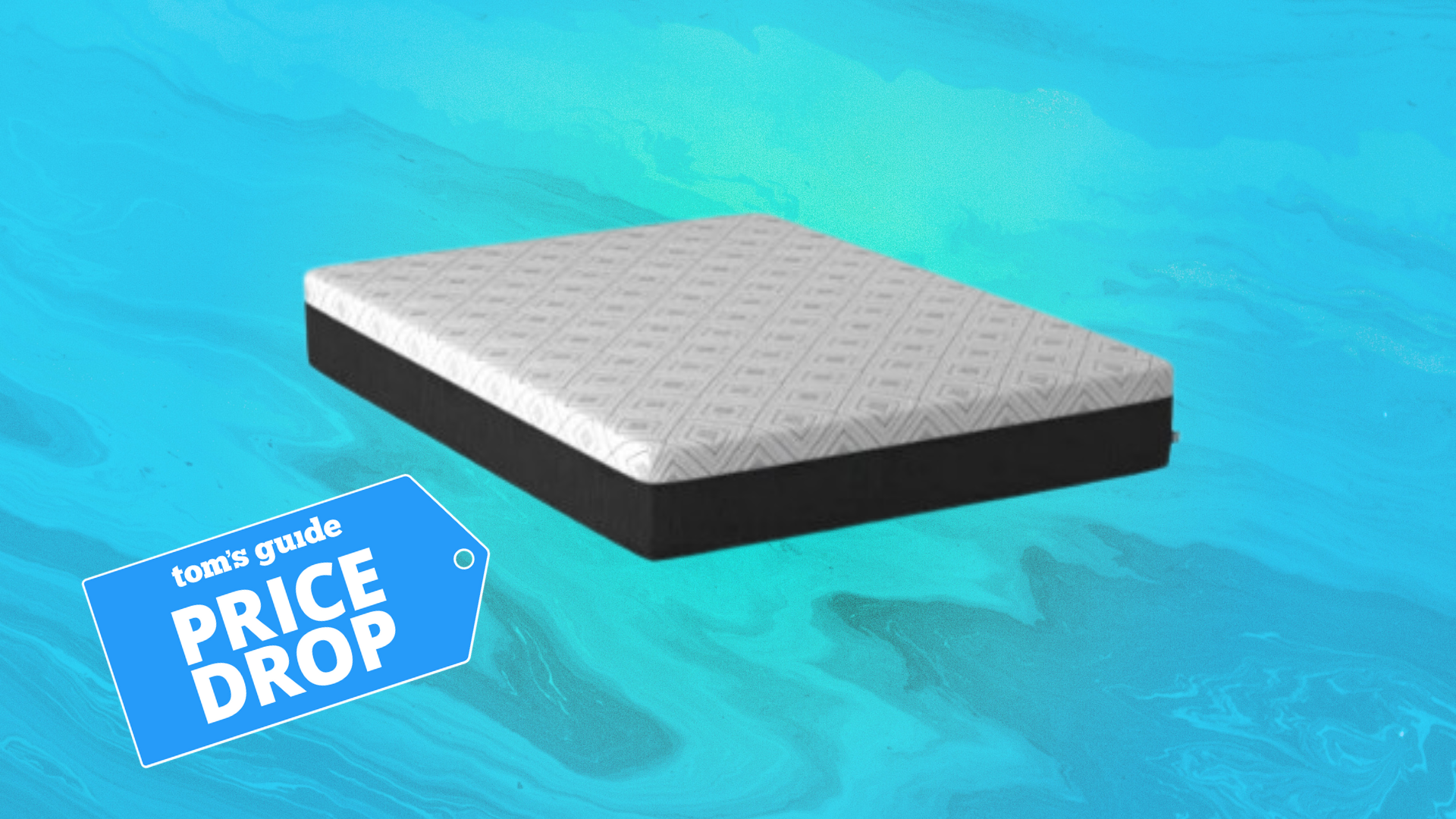I tested two smart coolers side-by-side, and this is the one worth your money
Anker Solix EverFrost 2 vs. EcoFlow Glacier: Which smart cooler should you get?

Anker and EcoFlow both make two popular “smart” coolers: The Anker Everfrost 2 and the EcoFlow GLACIER Classic Portable Fridge Freezer. Essentially, they’re portable refrigerators, which means you don’t have to add ice, allowing you to pack in more beverages and the like, and even control the temperature.
Both coolers are also Wi-Fi connected, so you can control them from your phones. They can even be recharged through solar panels.
However, both of these options cost upward of $800, making them really expensive compared to the best coolers. So, you're going to want to know if they are really worth the spend before you splash out.
Well, I've done the hard work for you. I've put the Anker Solix EverFrost 2 and EcoFlow Glacier head to head, rating them on design, performance, and price to see which is the best investment for your money.
Price
The Anker EverFrost comes in two sizes: A 40L model for $899, and a 58L model that costs $1,099. The biggest difference between the two models (aside from the size) is that the larger one has a dual-zone interior, so you can store things at different temperatures.
EcoFlow sells its cooler in three sizes: A 35L model costs $1,098, a 45L model costs $1,198, and a 55L model costs $1,498. Similar to Anker, the 45L and 55L models have two cooling zones, so you can have one area that’s a different temperature than the other.
For the purposes of this story, I tested the 40L Anker EverFrost and the 355L EcoFlow Glacier.
Get instant access to breaking news, the hottest reviews, great deals and helpful tips.
Fortunately, you can often find both models on sale, which helps take the sting out of things.
Winner: Anker. Its models are less expensive, even for similar sizes.
Design
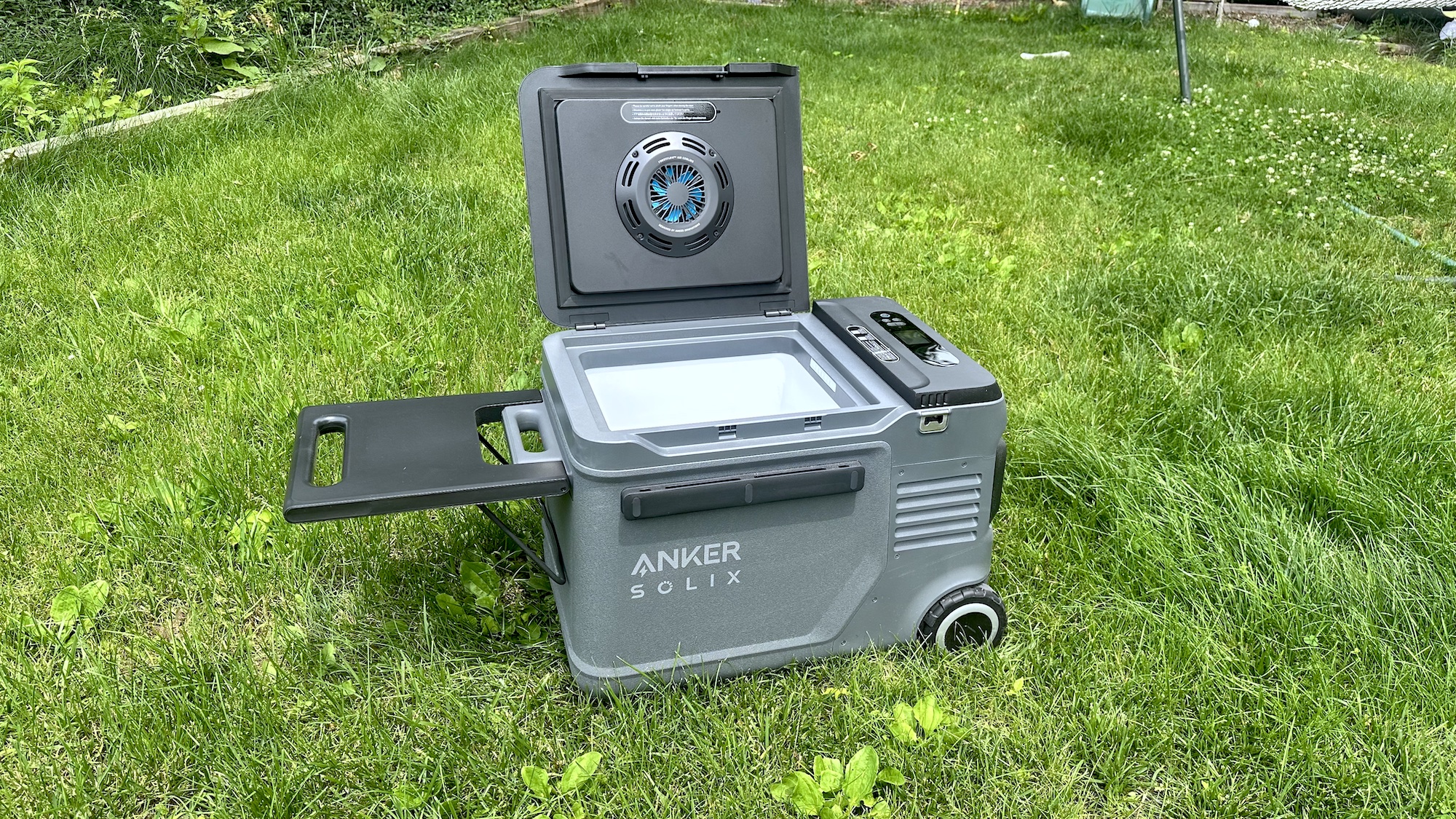
Overall, Anker’s cooler is well-built. It has a sturdy lid, two large wheels, and a fold-out tray that you can use to prepare food; it also has a handle, which makes it easier to wheel the cooler around if you’re on the tall side.
I also like that the lid has a ruler etched into one edge, which is handy if you’re out fishing. Inside, the cooler has an LED light that turns on when you open the lid, and a drain plug in the bottom. It also has a large display on the outside that’s easy to use, and shows you the temperature inside the cooler and battery level, and lets you adjust the temperature..
As a final bonus, there’s a small bottle opener on the outside, too.
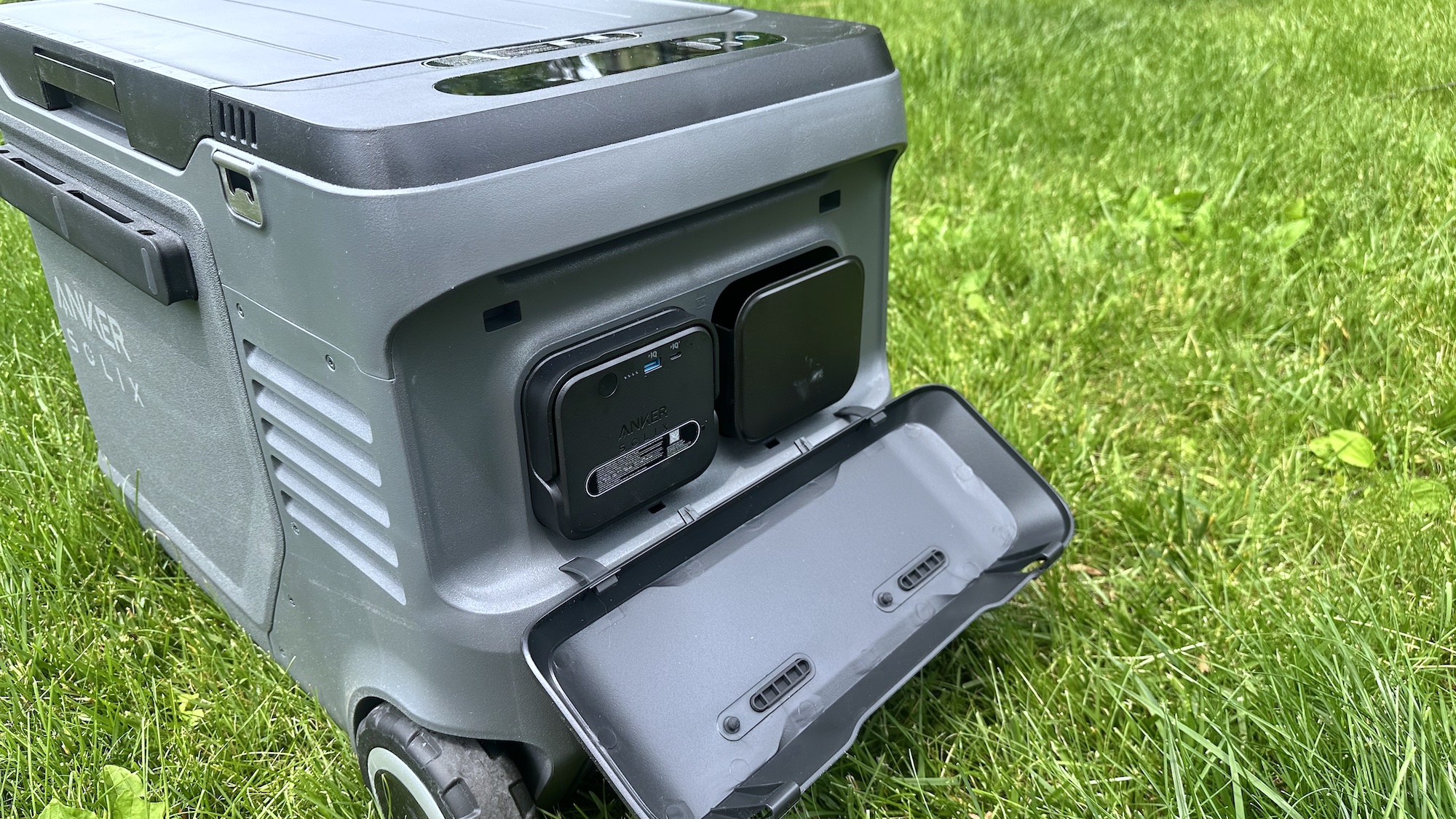
My biggest issue with Anker’s cooler is its battery cover, which is a bit flimsy —- it’s a hard piece of plastic that’s secured with two little tabs. There’s also no gasket around this cover, which allows water to get into one of the more crucial areas of the cooler. Below this is a port for the included battery charger, as well as a port to connect a solar panel, in case you’re off the grid.
While the battery itself has a USB and a USB-C port, I also wish these were more accessible on the outside of the cooler, as this would make it easier to plug in your phone or some other device.

EcoFlow’s cooler doesn’t have any wheels, so despite its two large handles, it’s not as easy to carry around, especially if it’s full of heavy items like cans. I did like its lid, which is designed to be opened from either side, but there’s no ruler on the top, so anglers looking to measure their catch will be disappointed.
Inside, the EcoFlow also has an LED light and drain plug. Its battery cover also seems a lot more substantial than the Anker, though neither model is very waterproof; they can withstand some light rain, but you’re better off bringing them indoors if the weather starts to turn.
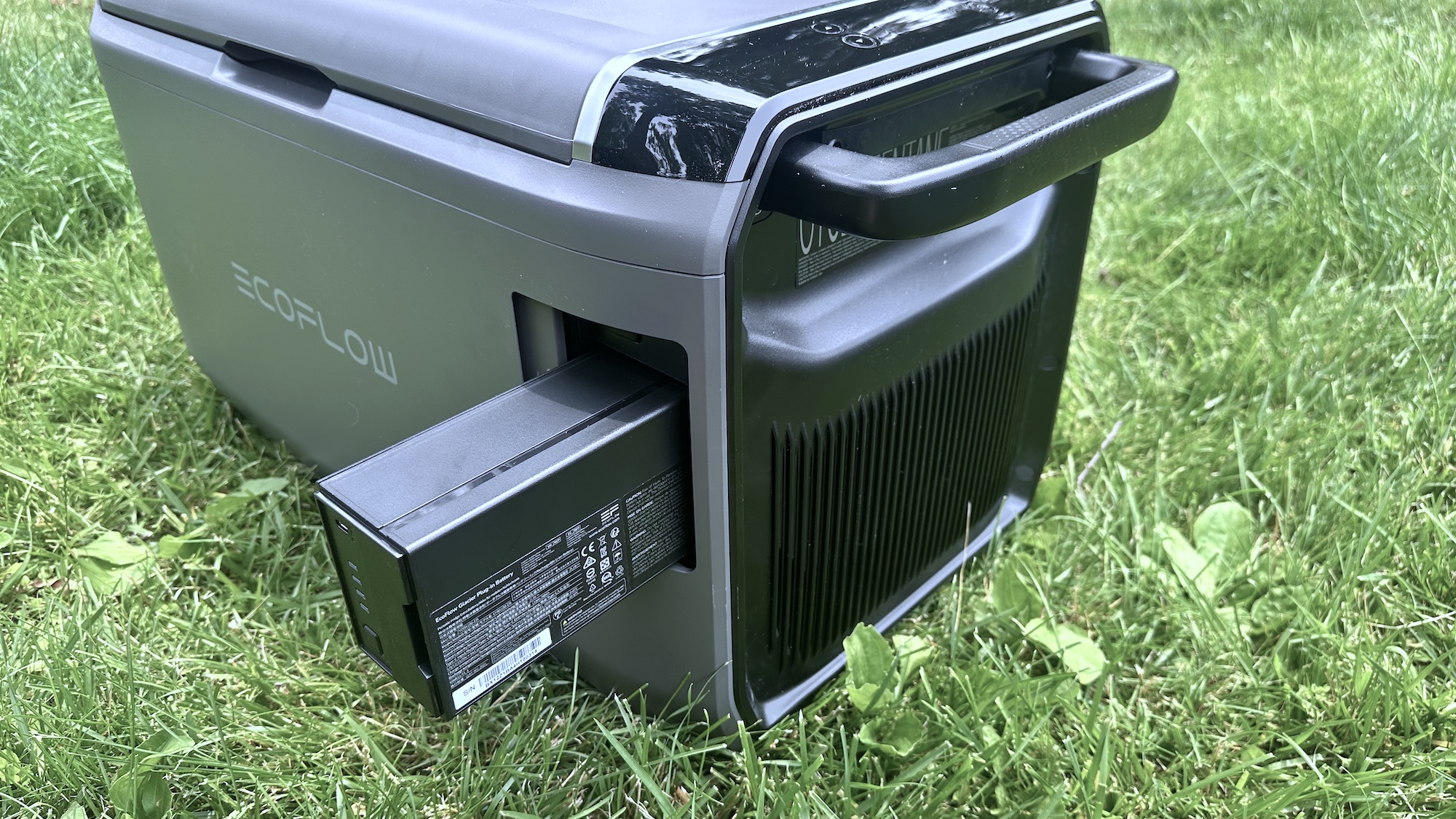
Because both coolers are Wi-Fi enabled, you can control them and monitor their temperatures via a smartphone app. Both apps were easy to use and presented information in a clear and concise manner.
Conveniently, both coolers can also be recharged using solar panels, handy for those of you who are off the grid.
Winner: Anker. Having a set of wheels (and a bottle opener) makes this cooler a lot easier to use.
Performance

Both Anker and EcoFlow say their coolers can keep things at temperatures from -4°F to 68°F. To test the coolers, I set them up next to each other outside, and set the temperature on both to 32°F, and stuck a temperature probe inside each.
Both were quick to lower the temperature to the desired level — they each went from the mid-60s to 32°F in about 15 minutes. Similar to a regular refrigerator, the temperature didn’t stay at a constant 32°F, but varied a bit, from 28°F to 35°F; on a chart, it jaggers up and down like a saw blade.
Winner: Tie. Both performed as expected, with no huge difference between them.
Battery life
Anker’s cooler has two battery bays, although it only comes with one battery.; the company says it can keep things at 39°F for up to 52 hours on one battery, and 104 hours with two. By comparison, the EcoFlow only has one battery (though it’s about the size of two Anker batteries) and can keep things chilled for up to 39 hours.
As mentioned earlier, I set both to 32 degrees on Eco mode, and started them off. Both coolers were empty, and placed side-by-side on a day when the temperature started at 78 degrees, and peaked at 88 degrees.
After 24 hours, the EcoFlow was completely drained, while the Anker’s battery still had a 22% charge left.
Winner: Anker. Its battery — just one of them — lasts longer.
Bottom line: Which smart cooler is the best?
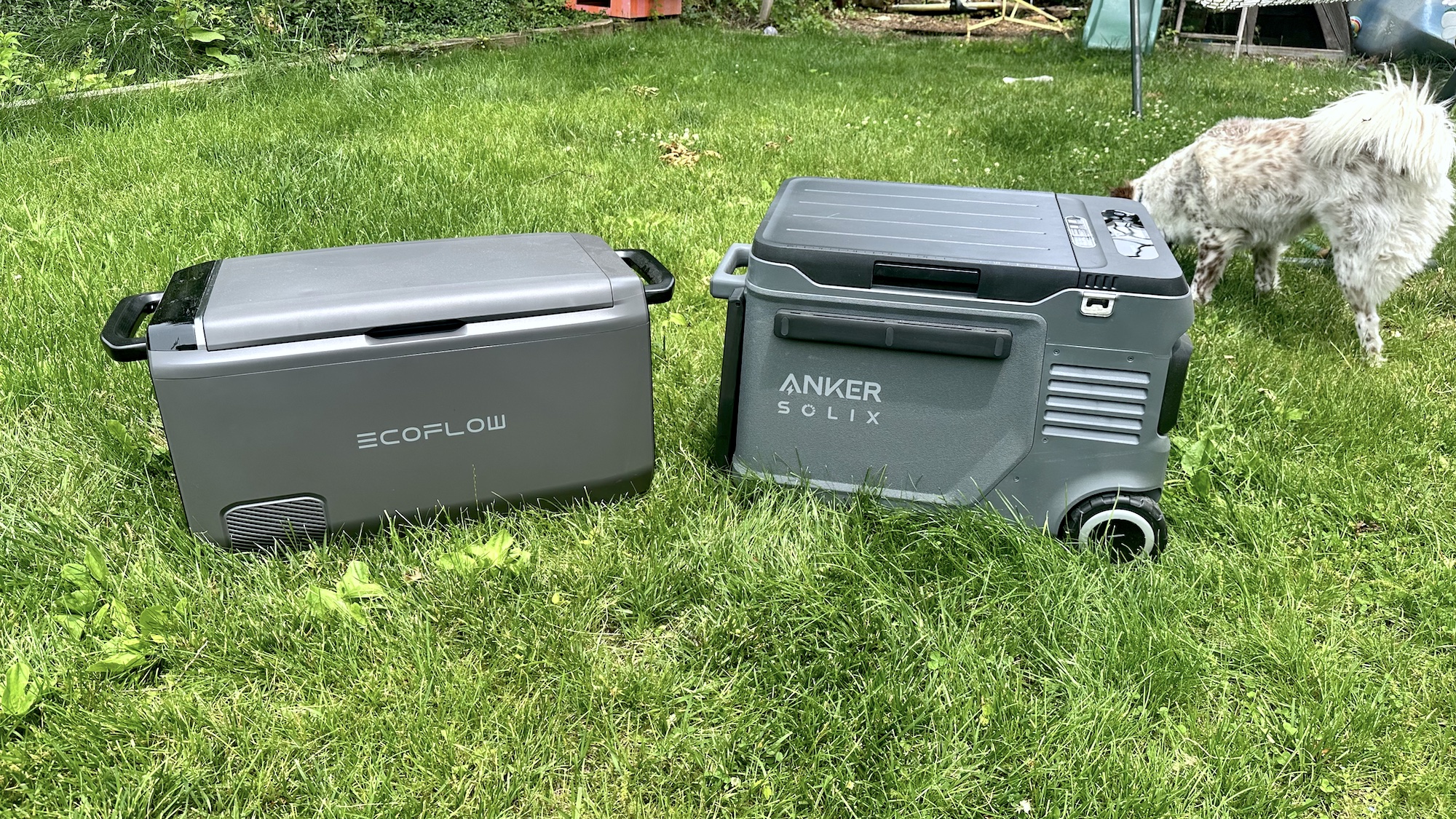
It was a pretty clean sweep here: Anker’s EverFrost 2 beat the EcoFlow Glacier in terms of design, battery life and, perhaps most importantly, price. Both coolers performed about the same on my chill test — you should get great results from either — but Anker’s model is easier to move around, and has some nice little extras, like the bottle opener and side table.
But the fact that a similarly sized model costs $200 less than the EcoFlow? That’s a lot of beer money.
More from Tom's Guide

Michael A. Prospero is the U.S. Editor-in-Chief for Tom’s Guide. He oversees all evergreen content and oversees the Homes, Smart Home, and Fitness/Wearables categories for the site. In his spare time, he also tests out the latest drones, electric scooters, and smart home gadgets, such as video doorbells. Before his tenure at Tom's Guide, he was the Reviews Editor for Laptop Magazine, a reporter at Fast Company, the Times of Trenton, and, many eons back, an intern at George magazine. He received his undergraduate degree from Boston College, where he worked on the campus newspaper The Heights, and then attended the Columbia University school of Journalism. When he’s not testing out the latest running watch, electric scooter, or skiing or training for a marathon, he’s probably using the latest sous vide machine, smoker, or pizza oven, to the delight — or chagrin — of his family.
You must confirm your public display name before commenting
Please logout and then login again, you will then be prompted to enter your display name.
